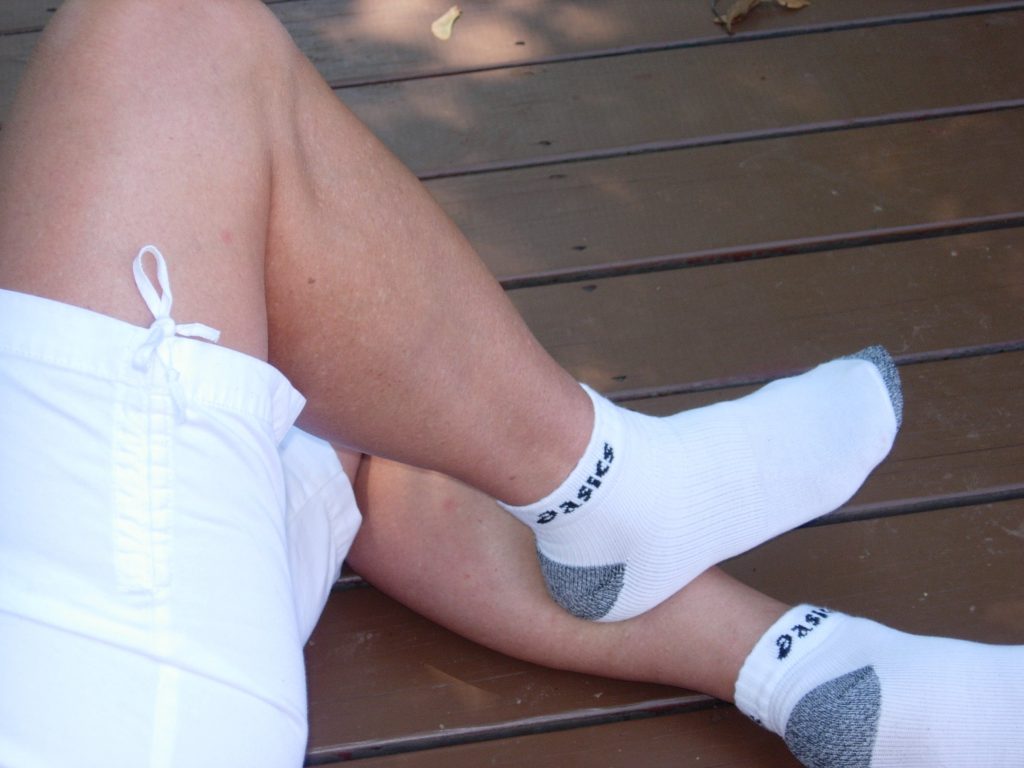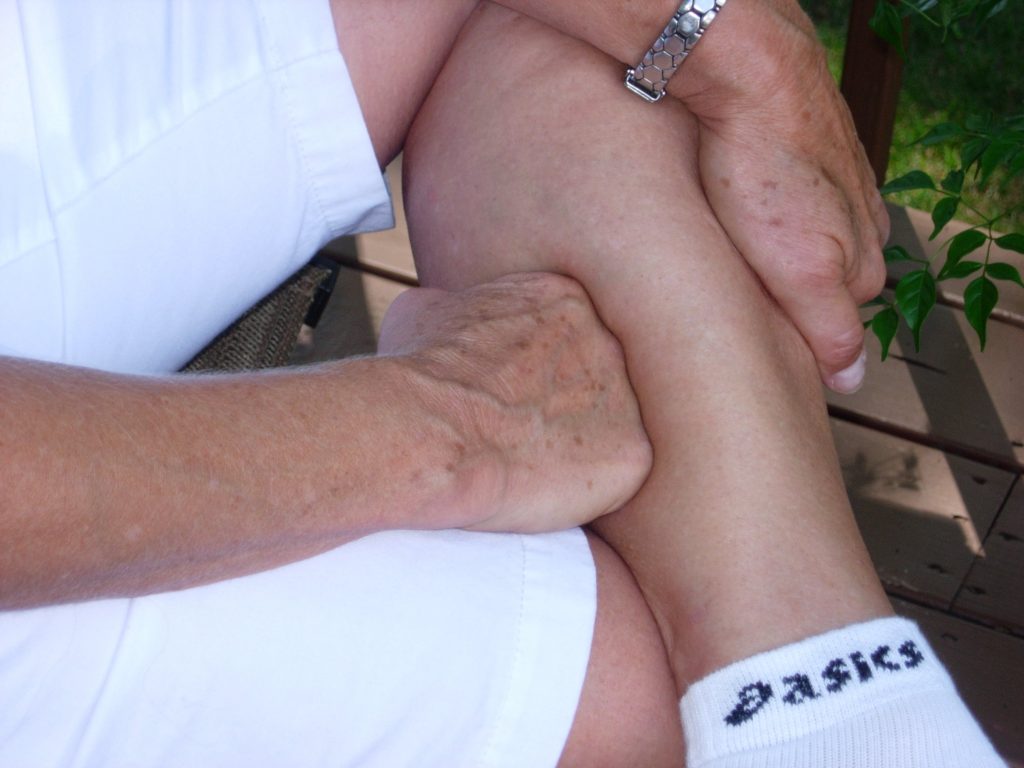This past weekend I was teaching an Ultimate Performance clinic to Ultimate Frizbee players in Cary, NC. It went well, I’m looking forward to the next clinic in Cary, which will be on October 12th at 3PM. If you’re in the area I hope you’ll plan on attending it.
Then yesterday I saw a friend and she was telling me she’s preparing for a marathon so we spent some time working on the calf muscles. I taught her the self-treatments that are the most frequently used: using the opposite heel on her tibialis anterior and peroneals (front and side of the lower leg) and her opposite knee to work out her calf muscles.
Later I was thinking of a self-treatment that I haven’t used in a while, but that is very effective. I’ve mentioned before that in Dec. 2010 I severely broke my ankle (what a learning lesson about the muscles that move the foot!) and this technique still is so helpful at releasing the tension that keeps coming back and preventing my foot from moving easily. I thought that this will be an excellent topic for today’s Pain-Free Living blog.
Your calf muscles (gastrocnemius and soleus) are the two primary muscles you feel when you squeeze your calf. Both muscles insert into your Achilles tendon, pulling up on your heel as you walk, and enabling you to stand on your toes. When these muscles are tight they are pulling on your heel bone, but you are trying to keep your foot flat on the ground, so there is tension along the entire muscle. You may feel it in your foot (it’s actually one of the muscles that causes plantar fasciitis) or you may feel it along the length of your calf and at the back of your knee.
This self-treatment works so well because you are applying direct pressure to the shortened fibers of both muscles, and therefore releasing tension on your ankle and foot.

As shown in the picture above, use your opposite heel to press down onto your calf muscles. The area shown in the picture is also treating a muscle called flexor digitorum longus, which is the muscle that ultimately inserts into the bottom of your four toes and is a big problem for runners. You can go along the entire length of the calf, from the bend of your knee all the way to your ankle. If the muscle is tight it will hurt, but you’re in control of the pressure so keep it at “hurts so good.”

The treatment above is easy to do by just pressing the knuckles of your fist directly into your calf. Find the tight “rope” of muscle fibers and then keep the pressure on for about a minute before releasing and then do it over again.
These are very strong muscles and you may need to do this over several times, but each time you’ll get significant relief from discomfort.
Have a great day!
Julie